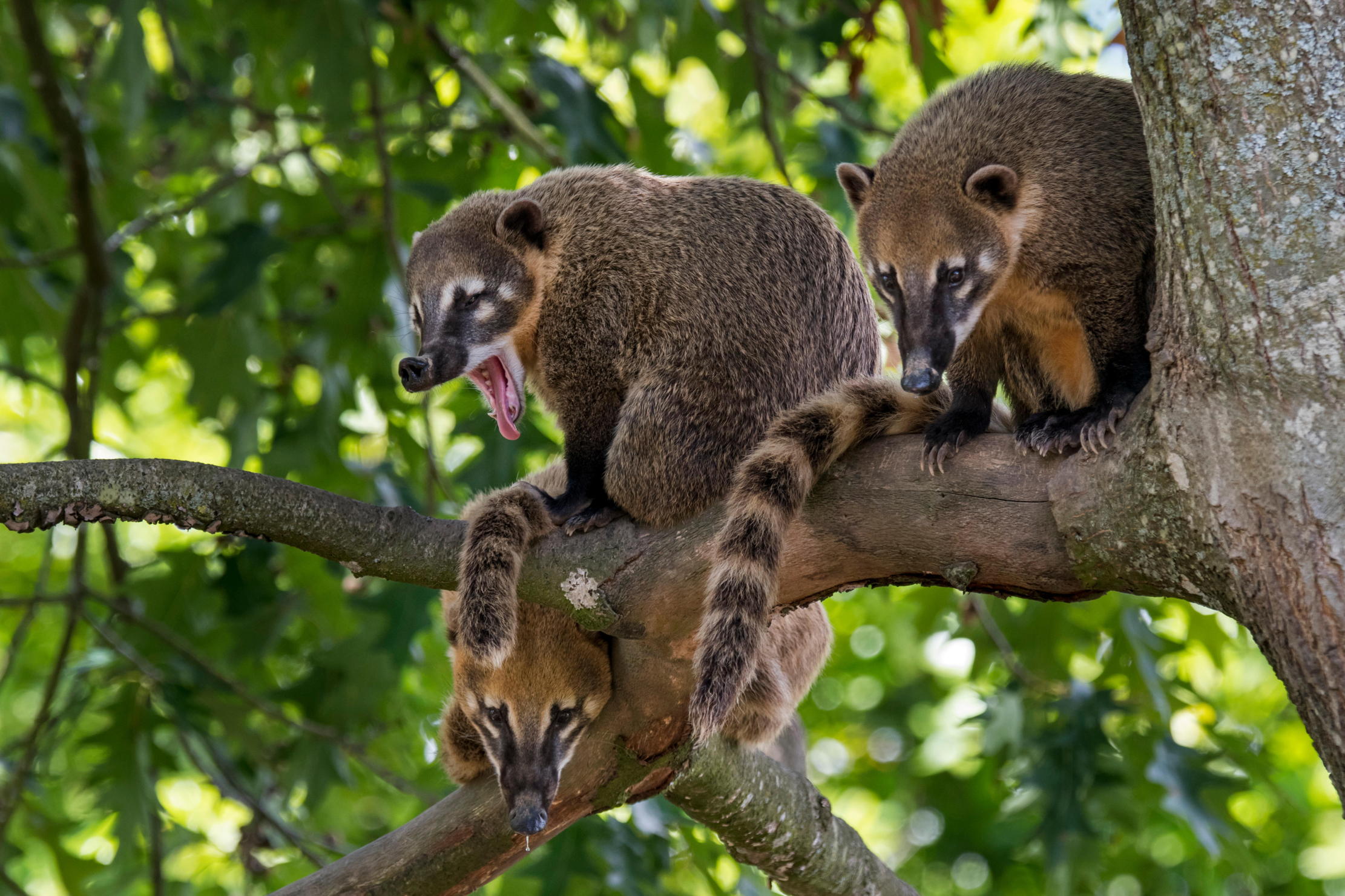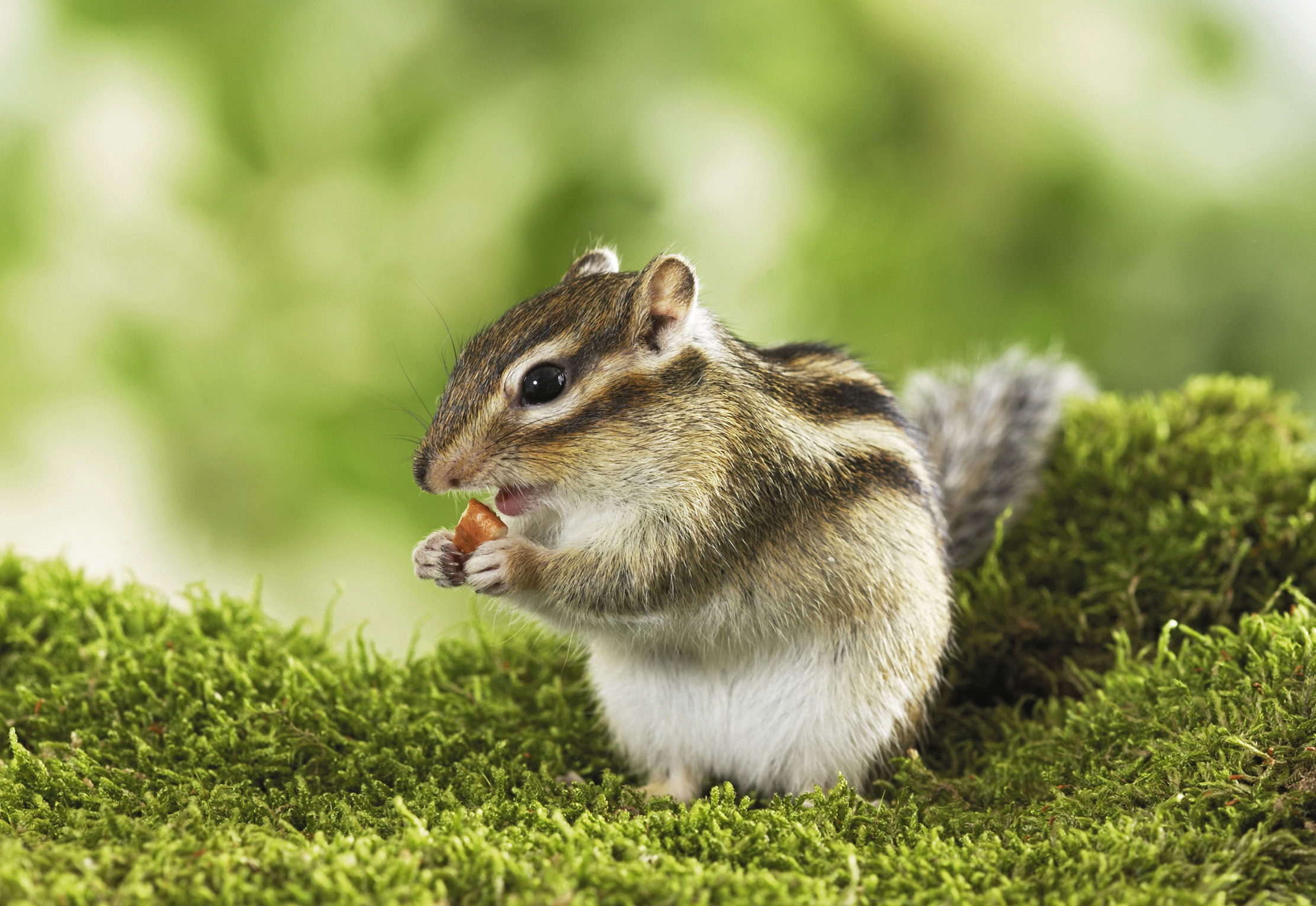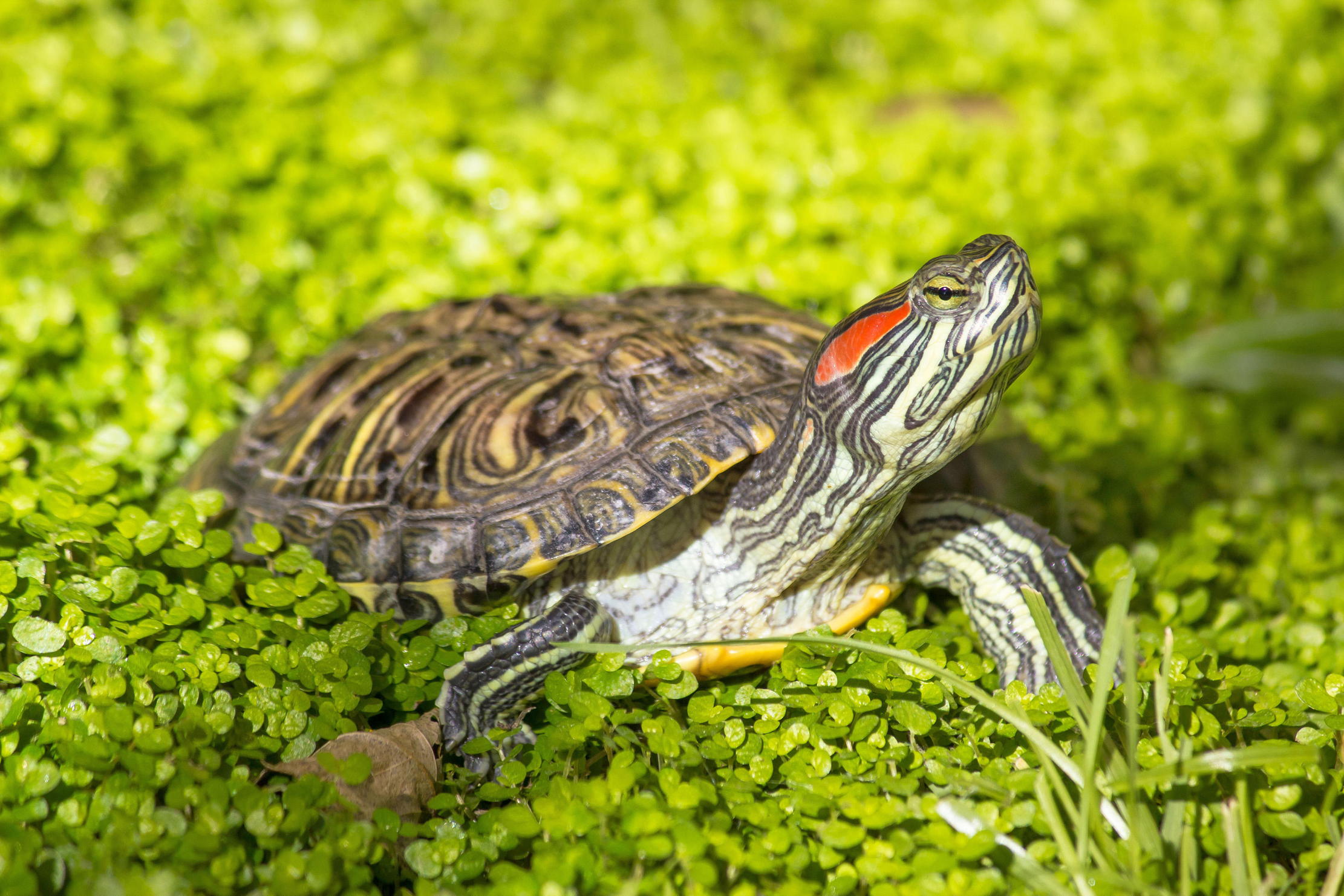A taste of the exotic: the strangest animals roaming the British Isles
Thanks to escapees from private collections and zoos, hitchhikers and releases of inconvenient pets, followed by the breeding efforts of these resilient species, the British Isles are now home to all kinds of exotic fauna not at all native to these shores.


It rather smacks of the delusional, doesn’t it? Much as a big-cat spotting or a reported glimpse of a humongous marine creature peeking above the waters of Loch Ness might cause snorts of derision, any suggestion that you’ve encountered a wallaby, a chipmunk or a scorpion on your afternoon ramble through the British countryside is likely to raise eyebrows. Yet you may well be right.
Coatimundi (Nasua nasua)
Is it a fox? Is it a badger? No… it’s a member of the raccoon family. About the size of a small dog, weighing in at up to 12lb, and usually at home in the forests of South America, the ring-tailed coati found itself wandering the British countryside after escaping from zoos and collections, as well as some possible deliberate releases. Nasua nasua sports a pointed black snout with white markings around the eyes, chin and throat, a reddish-brown and black coat, black feet and a distinctive erect, banded tail. With a gait like that of a small bear, the mammal spends its time hanging out in trees or searching for fruit, which it enjoys alongside small vertebrates and invertebrates.
Where to see them Cumbria, where there have been reported sightings since 2005.
Yellow-tailed scorpion (Euscorpius flavicaudis)
Let's start with the good news: reluctant to attack unless provoked and only mildly venomous, the yellow-tailed scorpion’s sting is likened to that of a bee on humans, so they are essentially harmless. They are also so small, at a mere 1½in–2in long, that you could almost step on one without noticing.
With a black body and tail, tan legs and a tan stinger or telson, these tiny invaders first arrived here in the 19th century and are thought to have snuck in on ships carrying stone masonry from mainland Europe. A native of north-west Africa and southern Europe, Euscorpius flavicaudis is largely nocturnal and likes to hide in cracks and crevices, feasting on woodlice and other small insects.
Where to see them Sheerness Docks on the Isle of Sheppey, Kent, where there is thought to be a population of some 15,000. They have also been spotted in east London.
Glossy ibis (Plegadis falcinellus)
With feathers that may appear brown, but are actually a rich patchwork of iridescent green, purple, chestnut-red and olive-gold, a glossy ibis in the right light is a vision in technicolour. A distant relative of storks and herons, the elegant wading bird has spindly legs, a long neck and a curved, curlew-like bill, which it uses to dig in the mud for invertebrates in wetlands and damp fields. This is one of the world’s most widespread birds, found in southern and eastern Europe, Asia, Australia, Africa and parts of America. Once a rare visitor to the UK, Plegadis falcinellus bred successfully here for the first time in 2022, after failed attempts in 2014 and 2016. This is credited to — no prizes for guessing what comes next — warmer temperatures caused by global climate change.
Exquisite houses, the beauty of Nature, and how to get the most from your life, straight to your inbox.
Where to see them The South of England and Wales, most commonly in autumn.
Siberian chipmunk (Tamias sibiricus)

The cutest little outlaw you’re likely to come across, this small brown-and-yellow member of the squirrel family, which sports an endearingly striped face and body with a bushy end on its tail, was banned as a pet here in 2016. At up to 10in in size and with a lifespan of 4–10 years in captivity, it’s legal to keep an existing pet until the end of its life, but it is no longer permitted to buy or breed them.
Hailing from northern Asia, central Russia, China, Korea and northern Japan, Tamias sibiricus has been seen roaming our parks and woodlands on the odd occasion since 1999. This is thanks to the usual escape antics and bored owners, as well as mass releases by vandals in Berkshire in 2005, when 70 animals were set free, and Sussex in 2009, when 20 were sent scurrying on their way.
Where to see them As an alert species, absconders should be reported and are quickly captured or killed, but some — smarter than the average chipmunk — have spent months on the run. It would be very much a case of right time, right place.
Red-necked wallaby (Macropus rufogriseus)
Do we need to describe a wallaby? We all know what a kangaroo looks like, so picture that, but about half the size. Voilà. With brown fur, greyish cheeks and bellies, red patches on the shoulders — hence the name — and black points on the ears, nose, paws and tails, our wallabies are native Tasmanians that have escaped or been released from zoos and private collections. Present here since 1865, the first sightings of bouncers on the run began in the early 1900s, with these escapees successfully breeding to form colonies.
Solitary creatures that are more active at night, they will tend to lie down in vegetation during the day. Macropus rufogriseus prefers scrub or woodland habitat, where it can find heather, grasses, bracken and bilberries, and will slap the ground like a rabbit to raise the alarm. This is rarely necessary, however, as the animal has no natural predators here — other than cold winters, cars and the occasional opportunistic dog or fox.
Where to see them Loch Lomond in Scotland and on the Isle of Man, where numbers are currently in the hundreds (possibly even thousands). There was a population in the Peak District in Derbyshire, but with no sightings since 2000, this is now thought to be extinct.
Western green lizard (Lacerta bilineata)
A brigh-green, foot-long lizard with cheeks and throat in eye-catching aquamarine (in males, at least) is something you might expect to encounter in a sun-soaked holiday resort, but, at home, you would be forgiven for thinking that you’re hallucinating. Yet you may well stumble across one on our scrubby, south-facing coastal cliffs after their deliberate introduction here. A native to west and south-west Europe as well as the Channel Islands, Lacerta bilineata is partial to insects, fruit and birds’ eggs. Unsuccessful attempts to establish them in England had been made since the 19th century, with a colony finally taking root in the early 2000s.
Where to see them Bournemouth, Dorset, along the stretch of coast from Boscombe Pier to Southbourne.
Red-eared terrapin (Trachemys scripta elegans)

Leonardo, Donatello, Raphael and Michelangelo… if this list brought to mind heroes in a half shell, rather than Italian Renaissance artists, you could well be part of the problem. Native to North America and originating in the Mississippi basin, red-eared terrapins or sliders were imported in large numbers as pets during the late 1980s, following the popularity of the cartoon children’s television series Teenage Mutant Ninja Turtles (although they were banned, together with chipmunks, in 2016).
With a dark-green to black shell bearing lighter markings, yellow stripes on the head, neck and legs and a distinctive red patch behind each eye, a juvenile starts out perhaps measuring only an inch, but can grow up to 12in. It is at this point that many unfortunate pets, having grown more than expected or desired, were illegally released to fend for themselves. A keen and unfussy predator of aquatic life, from frogs and fish to the odd waterfowl, Trachemys scripta elegans can live for decades and has happily adapted to our climate. Although eggs have been found, it is thought to be too cold here for the terrapins to breed successfully.
Where to see them Throughout Britain, but particularly in warmer southern regions. Likely spots are parks, lakes, canals and rivers — anywhere with water and basking spots.
Coypu (Myocastor coypus)
A semi-aquatic rodent that resembles a small beaver in need of dental work, thanks to its protruding orange teeth, and with a rounded rather than flattened tail, the coypu is a native of South America. Brought to the UK for fur farming from 1929, the stocky little creature soon wrought its revenge by escaping and colonising Norfolk’s rivers, moving into Suffolk, Essex, Hertfordshire, Bedfordshire and Lincolnshire, with sightings also reported in the East of England, Scotland and Wales. As destructive as it is prolific, its grazing habits harmed reedbeds — important for native birds, such as bitterns, as well as for thatching — and its burrowing damaged river banks, flood defences and irrigation systems.
Where to see them You won’t — coypu were successfully eradicated in the UK by a government campaign that began in the 1960s and concluded in the late 1980s, at a cost of about £2.5 million. A stark warning, if one was needed, to anyone who thinks an illicit release of a little exotica might be ‘fun’.
Victoria Marston is the deputy features editor of Country Life
